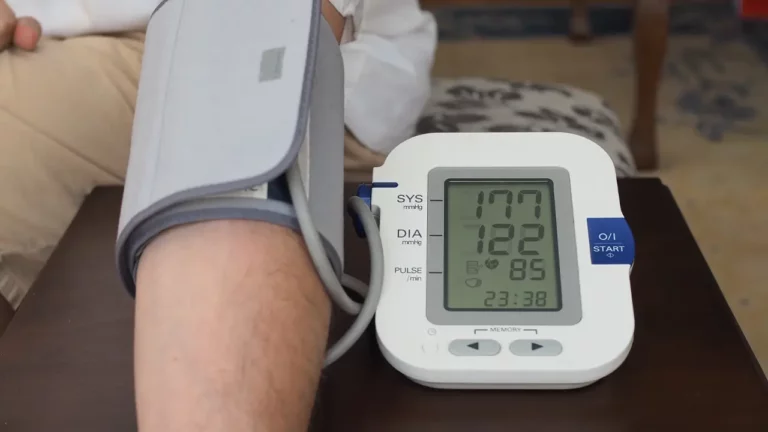Pulmonary hypertension is a serious progressive disease that affects 500-1,000 Americans each year. The condition occurs when the blood vessels supplying blood to the lungs become narrow or blocked, leading to high blood pressure in the pulmonary arteries and putting extra strain on the heart. This blockage to the lungs leads to a reduced lifespan for those affected as the heart must work harder with decreased blood flow. The mortality rate for pulmonary hypertension is high, with an estimated million people worldwide suffering from the condition. If left untreated, the prognosis for individuals with pulmonary hypertension is grim.
In this guide, we will examine the truth about life expectancy with pulmonary hypertension and the impact of remote patient monitoring (RPM) technology on pulmonary hypertension survival rates.
Understanding Pulmonary Hypertension Life Expectancy
Factors that Influence Life Expectancy with Pulmonary Hypertension
The prognosis and life expectancy depend on several factors, including:
- Severity of Pulmonary Hypertension: The more severe the condition, the shorter the anticipated lifespan.
- Underlying Causes: Some underlying causes, such as connective tissue diseases, can shorten anticipated lifespan.
- Treatment and Management: Effective treatment and management can significantly improve anticipated lifespan and help to keep the condition under control.
Types of Pulmonary Hypertension
Pulmonary hypertension is classified into five groups, each with different life expectancies:
- Group 1: Pulmonary Arterial Hypertension (PAH). – This group is characterized by a median survival time of 2.8 years without any treatment, with 68%, 48%, and 34% survival rates at 1-, 3-, and 5-year markings respectively. For healthcare providers (HCPs), it is important to be aware of these statistics, but it is also crucial to stay up-to-date on the most recent research and advancements in treatment options for PAH as they may impact the life expectancy of patients. It is recommended to review current studies and guidelines to provide the most accurate information to your patients.
- Group 2: Pulmonary Hypertension Due to Left Heart Disease. – The projected longevity in this group depends on the underlying heart condition and its management.
- Group 3: Pulmonary Hypertension Due to Lung Disease. – The projected longevity in this group depends on the severity and underlying cause of the lung disease.
- Group 4: Pulmonary Hypertension Due to Chronic Blood Clots in the Lungs. – The projected longevity in this group depends on the extent of blood clots and overall health.
- Group 5: Pulmonary Hypertension Due to Unknown Causes. – The projected longevity in this group is variable and improves when the cause is discovered and treated.
Impact of Pulmonary Hypertension on Life Expectancy
Pulmonary hypertension can have a significant impact on a person’s remaining lifespan and quality of life. In severe cases, it can lead to heart failure and death. In less severe cases, it can still cause symptoms such as shortness of breath, fatigue, and limit physical activity.
The typical life expectancy for people with pulmonary hypertension has historically been three to five years. However, advancements in managing the disease have gradually improved life expectancy. The rate of survival for patients with pulmonary hypertension caused by left or right heart disease is lower compared to those with pulmonary arterial hypertension (PAH). The exact remaining lifespan for patients with group 4 and group 5 pulmonary hypertension is challenging to determine as the underlying causes are not fully understood.
Improving Pulmonary Hypertension Life Expectancy
Pulmonary hypertension can be effectively managed with a combination of medical treatments, lifestyle changes, and regular monitoring. Here are some ways to manage the disease and improve patient’s survival rate:
- Diagnosis and Treatment: Early diagnosis and treatment of pulmonary hypertension is key in improving remaining lifespan. This may involve a combination of medications, lifestyle changes, and in some cases, surgery.
- Lifestyle Changes: Making changes to your lifestyle, such as quitting smoking, reducing alcohol consumption, and maintaining a healthy diet, can help manage symptoms and improve overall health.
- Regular Monitoring: Regular check-ups with a healthcare provider, monitoring of the disease, and adjusting treatment as needed can help to keep the condition under control and prevent progression.
- Oxygen Therapy: Maintaining proper oxygen levels with oxygen therapy can help improve the health and remaining lifespan of individuals with pulmonary hypertension.
It is important to start managing the disease as early as possible in order to help improve anticipated lifespan and maintain a good quality of life.
The Role of DrKumo RPM in Pulmonary Hypertension Improving Life Expectancy
The use of DrKumo RPM technology solution can significantly enhance the survival rate of people with pulmonary hypertension. DrKumo state-of-the-art, HIPAA-compliant system uses AI/ML technology to collect and track real-time data, providing patients with an easy and accurate way to monitor their condition.
Here’s how DrKumo RPM solutions can improve projected longevity for patients with pulmonary hypertension:
- Convenient Monitoring: Patients can monitor their condition from the comfort of their own home, avoiding the need for frequent trips to HCPs.
- Accurate Data Collection: The continuous monitoring provided by DrKumo ensures accurate and up-to-date information on the progression of the condition.
- Early Detection and Intervention: With real-time monitoring, DrKumo can detect any changes or worsening of the condition promptly, allowing for prompt interventions and adjustments in treatment.
- Increased Access to Care: By providing remote monitoring, patients with pulmonary hypertension have better access to care, improving their overall anticipated lifespan.
- Personalized Treatment: The data collected by DrKumo RPM solution can be used to develop personalized treatment plans that cater to the individual needs and progression of the patient’s condition.
In conclusion, DrKumo RPM solution has the potential to play a critical role in improving the survival rate of patients with pulmonary hypertension by providing continuous, convenient, and accurate monitoring, enabling early intervention, and promoting personalized treatment.
Conclusion
Pulmonary hypertension can significantly impact a person’s remaining years of life. However, with effective treatment, management, and monitoring, individuals with this condition can take control of their health and improve their remaining lifespan. RPM solution offers convenient way for individuals with pulmonary hypertension to continuously monitor their condition and receive the care they need, ultimately leading to improved anticipated lifespan.
Act now to improve patient outcomes with DrKumo RPM solution. Contact us immediately to learn how RPM can enhance PH management and increase life expectancy for your patients. Don’t miss this opportunity to elevate your practice.








